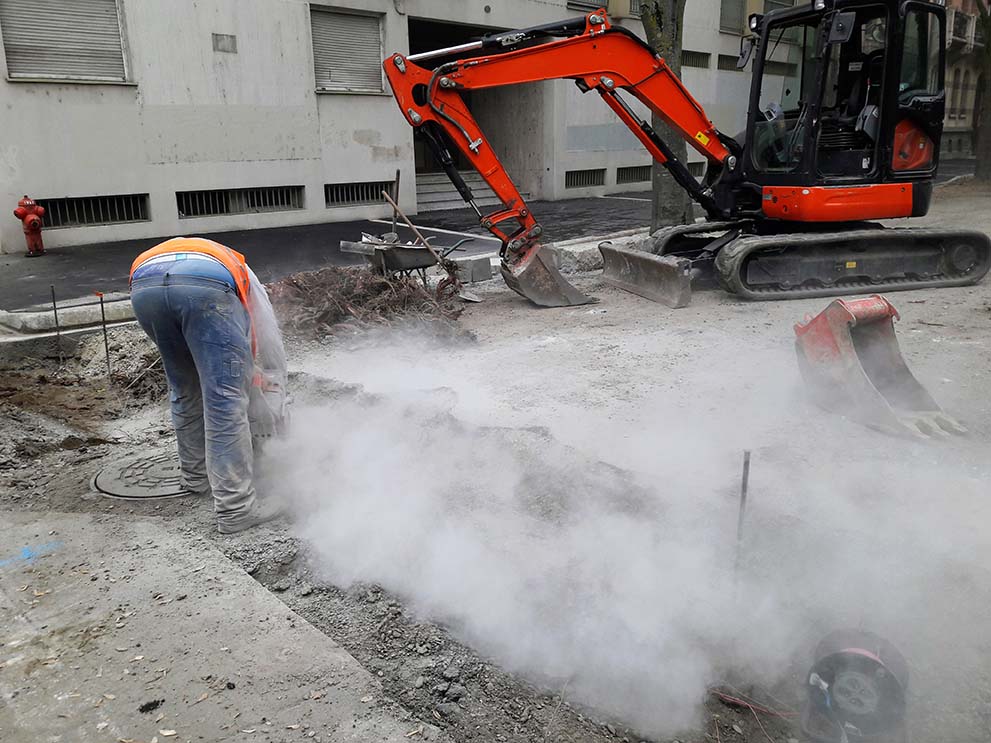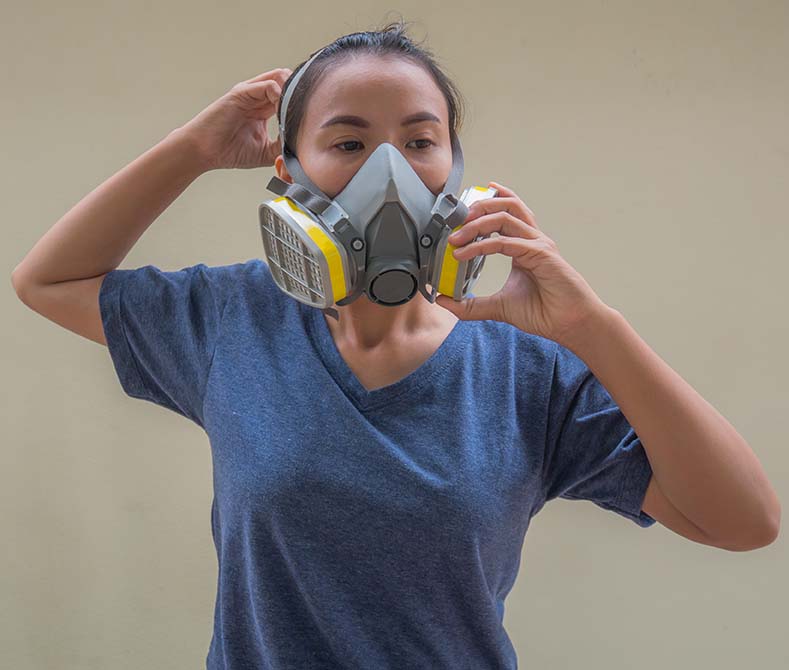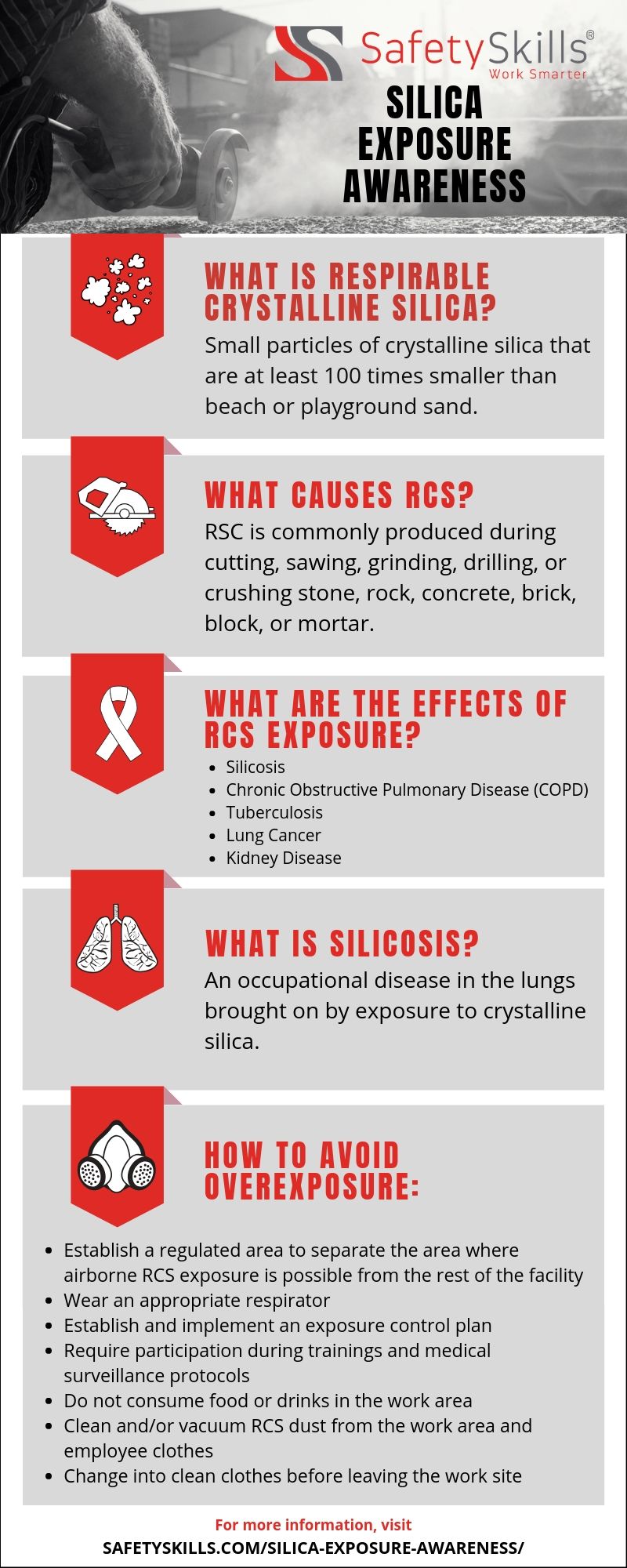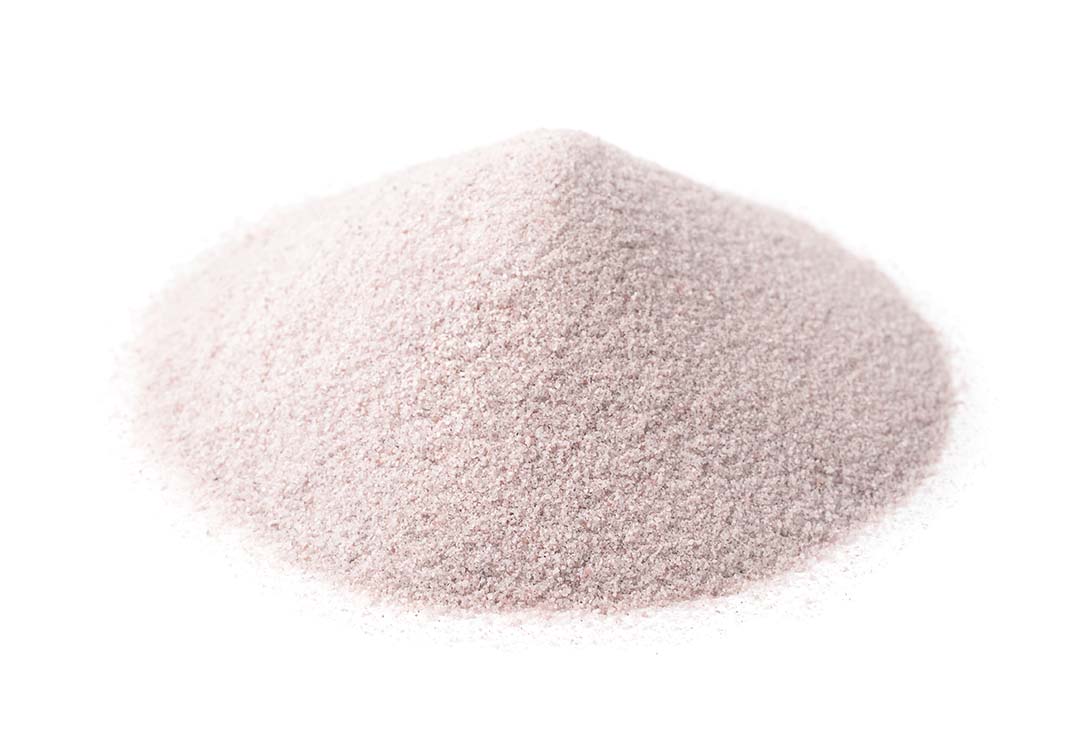Are you one of the 2.3 million people who are exposed to respirable crystalline silica? Crystalline silica is a common mineral found in sand, stone, concrete, and mortar. Respirable crystalline silica, or RCS, is very small particles of crystalline silica, at least 100 times smaller than beach or playground sand. It is commonly produced during cutting, sawing, grinding, drilling, or crushing stone, rock, concrete, brick, block, or mortar.
Silica exposure is not a new danger. Dr. Bernardino Ramazzini found evidence of the disease silicosis in stone cutters as early as 1700. Centuries later, in the late 1930s, the national “Stop Silicosis” campaign began in the U.S. after one of the worst industrial disasters in U.S. history, the Gauley Bridge tunnel project. Hundreds of workers died during the building process, and more than 1,500 died in the years following. In the early 1990s, silica was named a priority by the Occupational Safety and Health Administration, or OSHA.
Respirable Crystalline Silica Standards

OSHA requires employers to protect employees and provide safe working conditions. In addition, OSHA also maintains specific standards for RCS, with one for general industrial activities, and the other for construction activities. Compliance enforcement of the construction standard began in 2017, and general industry and maritime followed in 2018. The full standards won’t be in effect until 2021, as certain parts will be phased in more slowly. These standards are specific not to the industry, but to the activity. The standards are very similar and have the same permissible exposure limits (PELs), and action levels.
Under OSHA standards, employers are responsible for ensuring their employees are not exposed to more than the PEL of RCS while on the job. Being exposed to RCS can lead to disease, including:
- Silicosis
- Chronic obstructive pulmonary disease (COPD)
- Tuberculosis
- Lung cancer
- Kidney disease
Acute Silicosis
Acute silicosis can occur within weeks of exposure to the highest concentrations, but accelerated and chronic silicosis can take anywhere from five to 10 years to develop from exposure at lower concentrations. An employee could be exposed while just starting in the job, but not actually be sick for a decade. Monitoring and protecting your employees is important, as additional exposure after diagnosis must be prevented.
Employer Responsibilities
Employers are responsible for ensuring their employees’ safety when working with RCS. These responsibilities include:
- Assessing the exposure of each employee who is or can reasonably expect to be exposed to RCS at or above the action level
- Reassessing employees anytime there is a change in production process, personnel, or practices
- Establishing regulated areas to separate the area where airborne RCS exposure is possible from the rest of the facility
- Posting signs at the entrances of regulated areas that warn of RCS and its hazards, including cancer and lung damage

Employees who will be working in an area where they will be exposed to RCS at or above the action level for 30 days or more annually must be provided with medical surveillance by their employer, at no cost. In addition, these medical exams must be provided at least once every three years. These exams must be performed by a physician or other licensed healthcare professional, and should include a chest x-ray, pulmonary function test, and – if the employee has been diagnosed with silicosis – a test for tuberculosis. There is no cure for silicosis, but employees should still be aware if they have it or not to prevent additional RCS exposure.

When employees are working with RCS, employers may need to provide employees with an appropriate respirator, train them on proper respirator use and care, and require them to wear it if they enter an area with potential RCS exposure. Whether or not employees will need a respirator for the task they’re performing will depend on the results of monitoring as well as the exposure control plan. Employers must establish and implement the plan and make it available for examination and copying by any employee working with RCS. Employers must also train employees on the plan, so they are familiar with both the risks and controls.
Employee Responsibilities
Employees also have responsibilities when working with RCS. Employees are expected to participate in training and medical surveillance and follow protocols for avoiding RCS exposure, including wearing the appropriate clothing and avoiding consuming food or drinks in the work area. It is extremely important that employees are fully aware of the risks of RCS inhalation. This ensures that even if cleaning up after a day’s work takes longer, they recognize the value in it. For example, employees may have to vacuum RCS dust from their work clothes and change into clean clothing before leaving the work site. They must not carry that dust into their homes, as it can potentially cause harm to those they live with.
Conclusion
RCS exposure can be deadly but taking appropriate precautions can prevent silicosis. Employers and employees must work together to meet the standards set by OSHA, and ensure the safety of everyone working with RCS.



